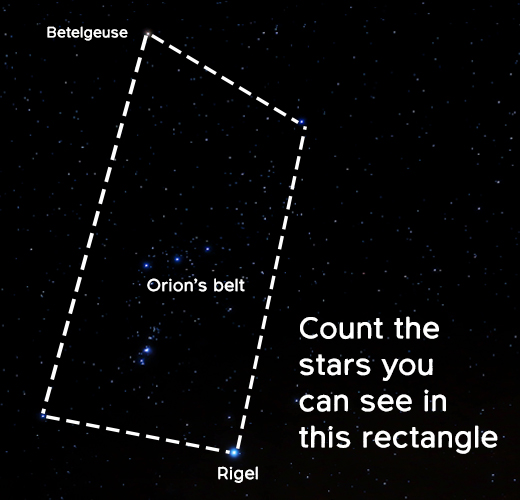Hi John
Star Count is now open for submissions!
Doing a count is simple - whether you live in town or country, just look to the night sky on a clear night from tonight until 24 February and tell us how many stars you can see within the constellation of Orion.
Are you ready to take part?
Click the button below to find out everything you need to know.
Dark, starry skies are a defining characteristic of our countryside. They’re also vitally important for the health of people and wildlife.
Sadly though, light pollution is obscuring our view of the stars and disrupting the behavioural patterns of wildlife.
Just 3% of people that took part last year enjoyed ‘truly dark skies’.
Star Count helps us find out where is best and worst for seeing the stars, and by showing on a map where light pollution is most serious, we can work with local councils and others to tackle it.
By taking part, you’ll be helping us rewild the night sky for the benefit of people and wildlife!
Here are 5 simple steps you can follow to take part in Star Count
1. Try to pick a clear night for your count, and wait until after 7pm so the sky is really dark.
2. Let your eyes adjust (the longer you wait, the better - we recommend at least 20 minutes).
3. Look south (the way satellite dishes point) and find the Orion constellation, with its four corners and three-star 'belt’.
4. Count the number of stars you can see within the rectangle made by the four corner stars. Don’t count the corner stars, but you can count the three stars in the middle – the belt.
5. Make a note of the number of stars seen with the naked eye (not with telescopes or binoculars) and then submit your count on our website.
Here's an image to help you find Orion.

Share your experiences (and any photos) with others on social media by tagging us @cpre and using #StarCount in your posts.
Happy stargazing!
Best wishes,
Emma
Emma Marrington
Dark skies campaigner